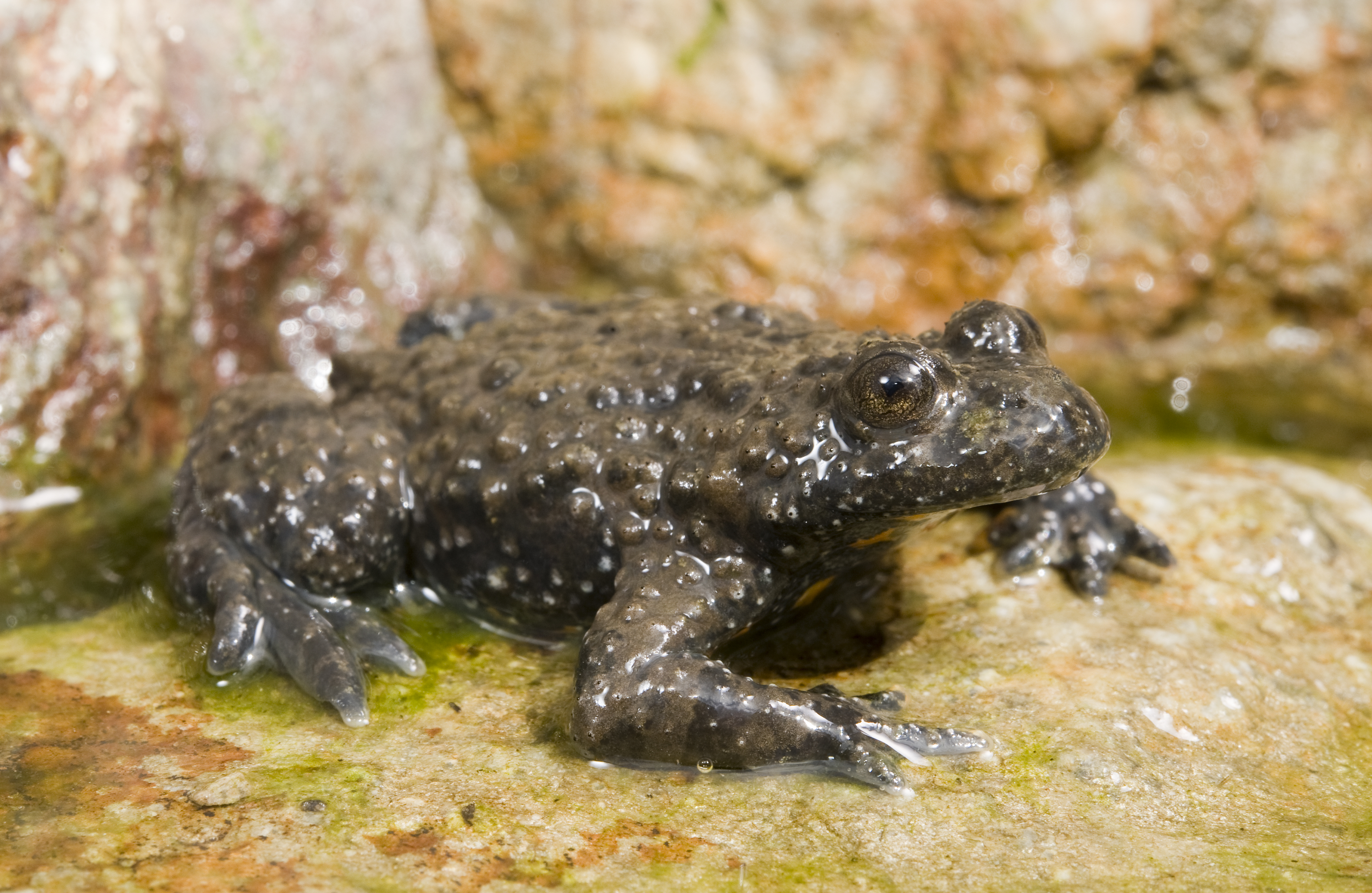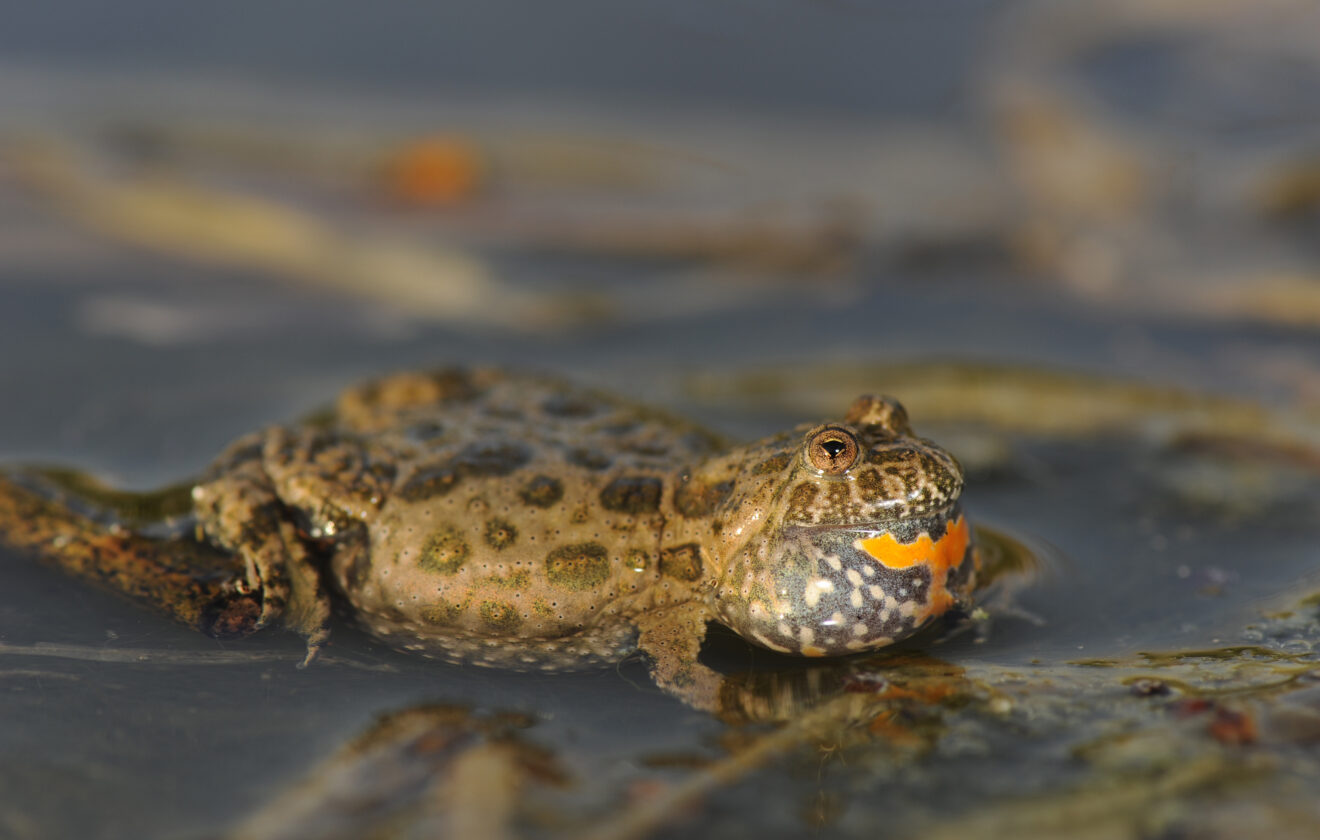The Enchanting World of the European Fire-Bellied Toad (Bombina bombina)#
Introduction#
Hidden within the serene wetlands and flooded meadows of central and eastern Europe, a captivating amphibian named Bombina bombina waits quietly, its presence unobtrusive yet vital. Commonly known as the European fire-bellied toad, this small amphibian packs vibrant beauty and fascinating behavior into its diminutive form. When approached or disturbed, the creature famously displays its bold red-and-black belly, a striking warning to predators that behind its gentle demeanor lies a potent defense mechanism—a mildly toxic secretion. With this intriguing combination of charm and caution, Bombina bombina has captivated the attention of scientists, conservationists, and nature enthusiasts alike, becoming not only a beloved figure of European folklore but also a vital indicator of environmental health.
Taxonomy and Classification#
To understand this intriguing amphibian fully, we must first elucidate its scientific identity. The European fire-bellied toad belongs to the family Bombinatoridae, renowned for their flattened bodies and brightly colored undersides. Within this family, two well-known genera exist: Bombina and Barbourula. Our focal species, Bombina bombina, shares its genus with several closely related species such as the Yellow-bellied toad (Bombina variegata). Despite their similarities and geographical overlap, subtle differences—from coloration to ecological preferences and call patterns—clearly delineate the various species within the genus.
Natural Habitat#
Bombina bombina claims a gentle, tranquil realm as its home. Stretching across much of central and eastern Europe—including countries such as Germany, Poland, Ukraine, Belarus, Hungary, and Romania—this amphibian thrives most vigorously in lowland wetland environments. The species favors slow-moving or stationary freshwater habitats like shallow ponds, flooded fields, marshlands, ditches, and small lakes fringed by lush aquatic vegetation. The interplay between open waters for breeding and abundant vegetation for hiding and feeding creates an ideal balance, sustaining populations where these balanced ecosystems persist.
Throughout the seasons, Bombina bombina shifts its local habitats slightly. Spring and early summer find them congregating in shallow ponds and ditches to mate and lay eggs. As the season progresses and waters recede, many fire-bellied toads disperse into moist meadows and surrounding grasslands, waiting patiently in refuge beneath leaf litter, moss, or debris during dry spells. Overwintering sites are equally vital—these creatures seek protected shelters among leaf piles, rotting logs, or underground burrows where they remain dormant, patiently awaiting the warmth of returning springtime.
Physical Characteristics#
The European fire-bellied toad is truly a jewel of its watery realms, small yet strikingly adorned. Adult individuals rarely exceed 5 centimeters (2 inches), presenting a compact, flattened body perfectly adapted to submerged living. Skin texture varies, subtly roughened with small wart-like tubercles blending effectively into the muddy bottom dwellings. Their dorsal side drapes itself in earthy hues from shades of olive-brown and dull green to muted greys, effectively camouflaged among submerged vegetation and muddy shores.
However, the fire-bellied toad’s best-known feature remains concealed until danger appears. When threatened or disturbed, this seemingly modest amphibian flips onto its back, proudly revealing a fiery underside intricately marked in vibrant patches of orange, scarlet, and intense red against a stark black background. This display, known as unkenreflex (“unken” meaning “toad” in German), acts as a stark warning: the animal’s skin glands contain a mild but toxic secretion, making it distasteful—and potentially harmful—to predators. The striking belly coloration, coupled with distinctive triangular pupils and webbed hind feet well adapted for their aquatic lifestyle, prepares the fire-bellied toad perfectly for life at the intersection of land and water.
Behavior and Life Cycle#
Feeding and Hunting Habits#
Though small in stature, Bombina bombina proves a capable predator to diminutive yet abundant prey. They primarily feed on invertebrates found within their wetland habitats, including insects, worms, spiders, and tiny crustaceans such as water fleas. Occupying positions near water vegetation, fire-bellied toads casually sit and watch, alertly scanning their surroundings. Upon detecting movement—often subtle as a small insect landing nearby—the frog rapidly extends its tongue, capturing prey swiftly and precisely. Their sit-and-wait strategy is notably energy efficient, conserving resources between feeding opportunities and enhancing their ability to flourish even in nutrient-sparse habitats.
Mating and Reproduction#
As spring envelops wetlands in warming temperatures and lengthening daylight, male European fire-bellied toads begin a chorus, producing soft, melodic calls—described by many as gentle, bell-like notes—that drift quietly across the evening waters. These calls effectively signal to females, triggering a delicate courtship dance that unfolds amidst shallow ponds and flooded grasslands each breeding season.
After successful courtship, the female releases eggs in small clusters, generally attaching them securely to aquatic plants or submerged debris, providing adequate safety from currents and lurking predators. Eggs’ development unfolds rapidly, the translucent spheres quickly revealing tiny tadpoles growing within. Within a few weeks, larvae hatch, entering the pond water as tiny tadpoles. Quickly adapting to aquatic life, they graze primarily on algae and microscopic plant matter, growing through continuous metamorphosis. Rapidly developing legs and losing their tail, the tadpoles transition from exclusively aquatic beings to fully terrestrial adults, capable of exploring their wider habitats and reinforcing populations where suitable wetlands remain.
Ecological Role#
Despite their humble size, European fire-bellied toads hold considerable significance within their ecosystems. At the ecological level, they serve important roles, controlling insect populations—including potential pests—and maintaining the balance within wetland communities. Simultaneously serving as prey for larger predators like birds, snakes, and even larger amphibians, these small frogs occupy a vital intermediate trophic level. With their permeable skin and water-dependent larvae, they are highly sensitive to environmental changes, acting as prominent bioindicators that scientists rely upon in monitoring ecosystem health. The prosperity—or decline—of fire-bellied toad populations can offer early warnings of environmental degradation, water pollution, climate variability, or habitat fragmentation.
Threats and Conservation Status#
Despite their resilience and adaptability, today’s landscape presents significant challenges to the long-term stability of Bombina bombina populations. Habitat destruction remains the primary threat, as human expansion steadily reduces available wetlands. Agricultural intensification—with pesticides, fertilizers, and drainage of marshland for crops—further diminishes delicate ecosystems essential for breeding and feeding. Additionally, regional factors such as pollution, climate change-induced weather pattern disruption, and novel pathogens (such as chytrid fungus) complicate survival, threatening vulnerable populations across their native range.
Given these pressures, Bombina bombina is currently classified by the International Union for Conservation of Nature (IUCN) as Least Concern globally thanks to relatively widespread distribution. Nonetheless, localized populations face considerable threat, prompting numerous conservation initiatives, from habitat restoration and wetland conservation projects to rigorous population monitoring and environmental awareness campaigns. These efforts seek to sustain viable populations and ensure crucial wetlands remain healthy, benefiting countless other species that share these unique ecosystems.
Cultural and Scientific Significance#
Across its range, Bombina bombina holds distinct cultural connections. Folklore often associates its distinctive coloration with fire and myth, visible in its common name—”fire-bellied toad”—reflecting an enduring human fascination with this diminutive amphibian.
Scientifically, populations of Bombina bombina provide excellent models for genetic research, ecology, toxicology studies, and understanding environmental indicators. Studies investigating their mild toxins have implications—from pharmaceuticals to ecological management strategies—encouraging deeper research collaboration and conservation awareness.
Conclusion#
The European fire-bellied toad—colorful, charismatic, and ecologically significant—represents a crucial link connecting humans to their environment. As habitat degradation presses urgently worldwide, the fortunes of humble yet captivating amphibians like Bombina bombina urge greater conservation commitment. Protecting these finely balanced wetland habitats transcends mere biodiversity protection; it safeguards human future as well. Supporting local conservation efforts, habitat restoration, and staying informed about wetland biodiversity actively contributes to preserving our shared natural heritage and ensuring this vibrant amphibian thrives for generations ahead.













